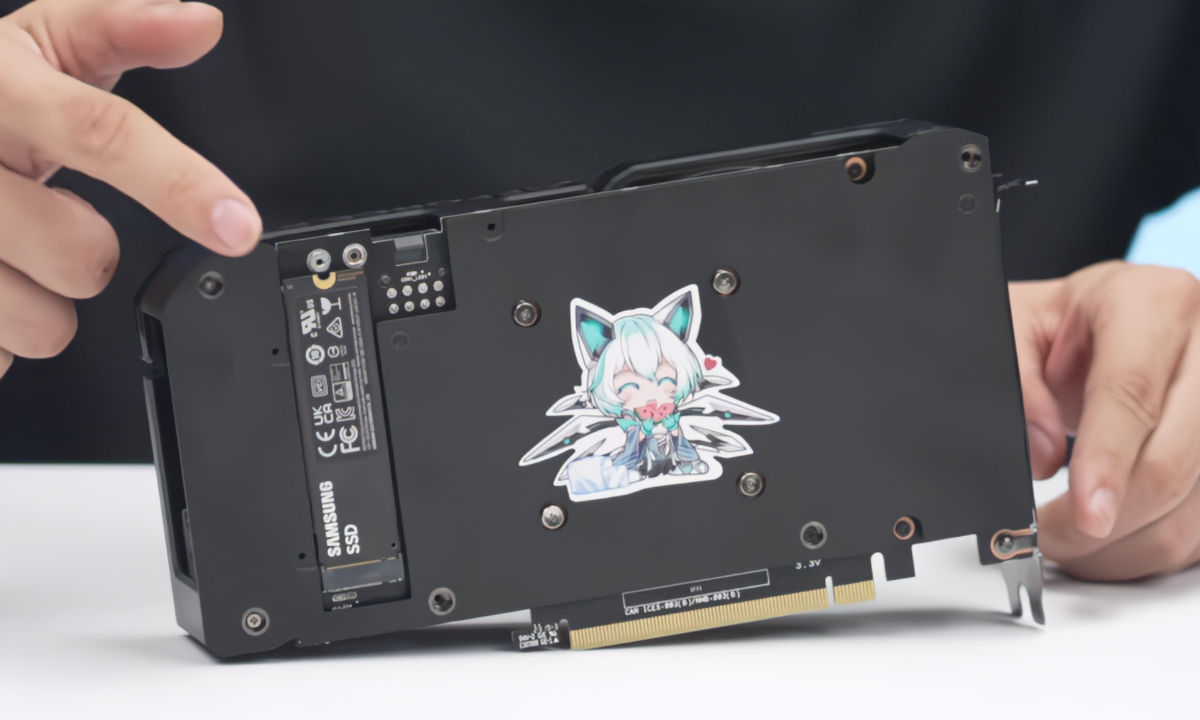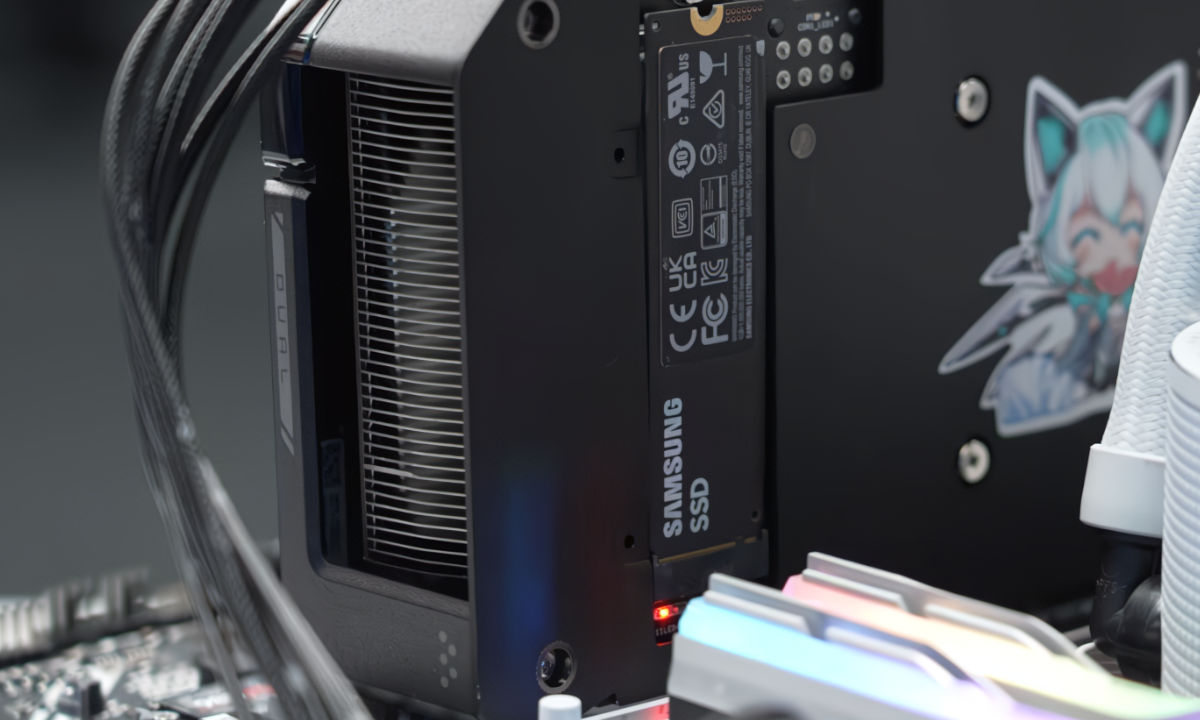ASUS shows GeForce RTX 4060 Ti with M.2 Gen 4 SSD slot
- July 2, 2023
- 0
First of all, it is important to be clear this GeForce RTX 060 Ti with an ASUS SSD slot is, at least for now, just a proof of
First of all, it is important to be clear this GeForce RTX 060 Ti with an ASUS SSD slot is, at least for now, just a proof of

First of all, it is important to be clear this GeForce RTX 060 Ti with an ASUS SSD slot is, at least for now, just a proof of concept, not a device that will already be on the market. Which, on the other hand, is a shame, because the truth is that the proposal has many interesting points, so it can be of particular interest to many users who were already thinking about jumping to the new generation of NVIDIA. Personally, if I were thinking about building a PC today, I have no doubt that this would seem like a more than recommended option.
To prevent anyone from getting their hopes up (at least in advance), we can see in Wccft today that ASUS showed the GeForce RTX 4060 Ti, which includes a PCIe M.2 Gen 4 slot in which we can install memory of this type, as you can see in the two images that illustrate this novelty. Specifically, for the test demonstrated by ASUS, a 2 terabyte Samsung 980 PRO SSD was used, that is, this concept allows the mounting of any standard SSD, it is not an in-house development that only allows the mounting of specially designed drives for this format. The graphics card has a standard GeForce RTX 4060 Ti design.
There are several advantages that a system like this ASUS prototype would provide. The first one the brand has is it allows the use of lanes not used by the GPU, thereby optimizing the use of system resources. For that reason alone, I can imagine that many users rate this proposal positively. Specifically, this GPU uses eight lanes, while an NVMe PCIe Gen 4 SSD uses four, so a hypothetical future design could include two of this type.
Another very interesting advantage of this ASUS design is that in general, accessing the back of the graphics card is usually much easier than accessing the PCIe slots. What’s more, in many builds you have to precisely remove the graphics card in order to connect or disconnect the NVMe drive. If ASUS continues this design and succeeds in commercializing it, it will show greater simplicity of performing this type of operation.

However, this format does not seem to improve performance, because even if the two devices are “together”, the communication between them will be subject to the same conditions as if the SSD was connected separately. However, if in the future there is a way to make use of this connection within games using DirectStorage, we might be in for some interesting improvements.
One aspect that can be a concern, yes, is the temperature. Obviously, we’re not talking about PCIe Gen 5 drives where temperature management starts to get complicated, but Gen 4 drives also generate heat that adds to the graphics card itself. To solve this problem, ASUS modified the design of the board and the scattering elements so that they also fulfill their function on the storage unit. The consequence of this? Initial tests revealed a 10°C temperature drop for the SSD compared to its stand-alone temperature.
An interesting list of advantages and few problems that have already been solved from the beginning tell us that we are talking about a solution that has a great potential to reach the market. Of course, the key at this point will be whether their price makes them competitive compared to the standard GeForce RTX 4060 Ti. If ASUS also achieves this goal, we can face a technology that has a great future ahead of it.
Source: Muy Computer
Donald Salinas is an experienced automobile journalist and writer for Div Bracket. He brings his readers the latest news and developments from the world of automobiles, offering a unique and knowledgeable perspective on the latest trends and innovations in the automotive industry.